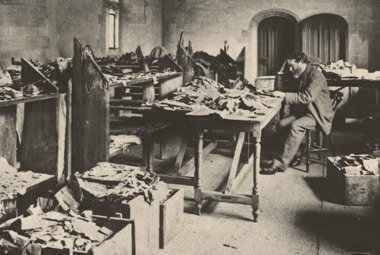Sacred Trash, new from Nextbook Press, tells the remarkable story of the Cairo Geniza, a trove of Jewish documents from the Middle Ages discovered again in the late 1800s

In the late 1800s, Solomon Schechter, the scholar and teacher whose name is familiar to scores of Jewish day-schoolstudents, discovered a remarkable trove of Jewish documents stuffed in an attic-like space in a Cairo synagogue. Ranging from liturgical texts to shipping orders, the documents were mostly written in Judeo-Arabic, Aramaic, and Yiddish and dated back to the Middle Ages. It was a geniza, a store room for documents containing the name of God and awaiting ritual burial. The Cairo Geniza, as the collection has become known, has since fueled decades of scholarship on centuries-old poets and theologians, as well as long-forgotten details of daily existence.
In Sacred Trash: The Lost and Found World of the Cairo Geniza, new from Nextbook Press, poet and translator Peter Cole and essayist Adina Hoffman recount the history of the Cairo Geniza and the scholars who dedicated their professional (and sometimes private) lives to its holdings. Cole and Hoffman spoke to Vox Tablet host Sara Ivry about how such a remarkable collection of documents came to exist, the many characters—from Schechter to a woman from the Middle Ages known as “Wuhsha the Broker”—associated with it, and what its contents reveal about historical celebrations of Passover.
By Vox Tablet|April 13, 2011 7:00 AM
Source: Tablet Mag
 eSefarad Noticias del Mundo Sefaradi
eSefarad Noticias del Mundo Sefaradi

